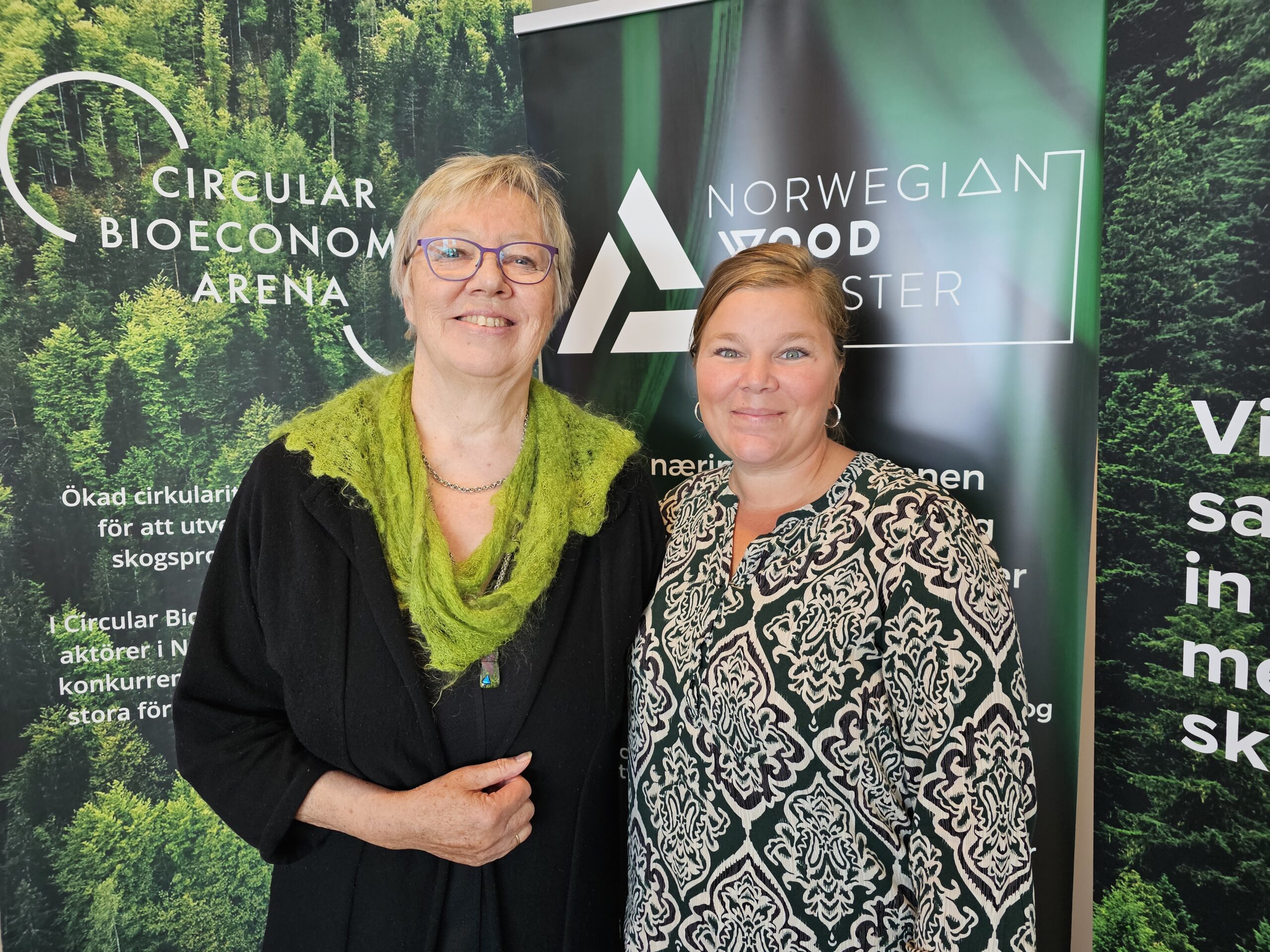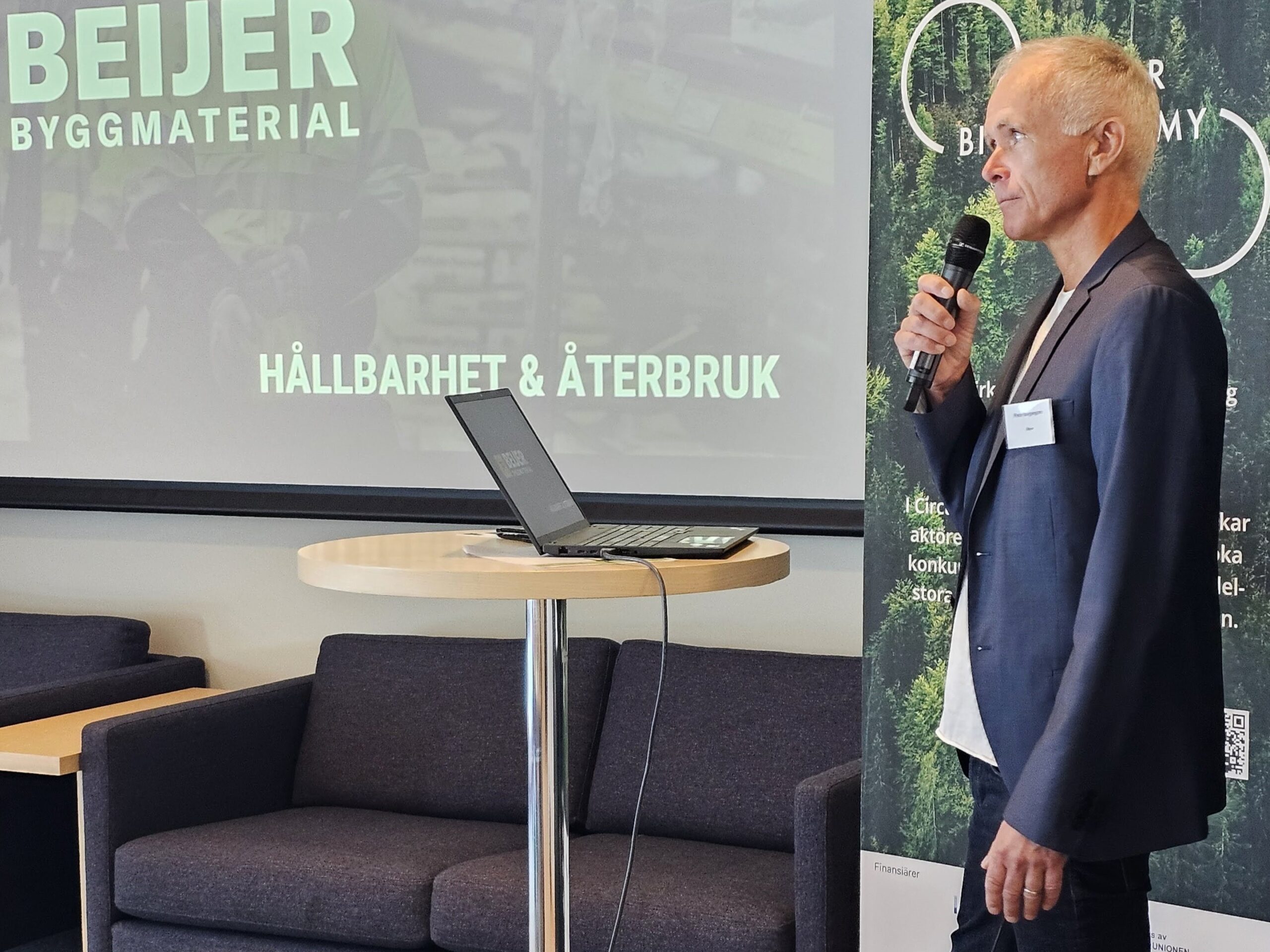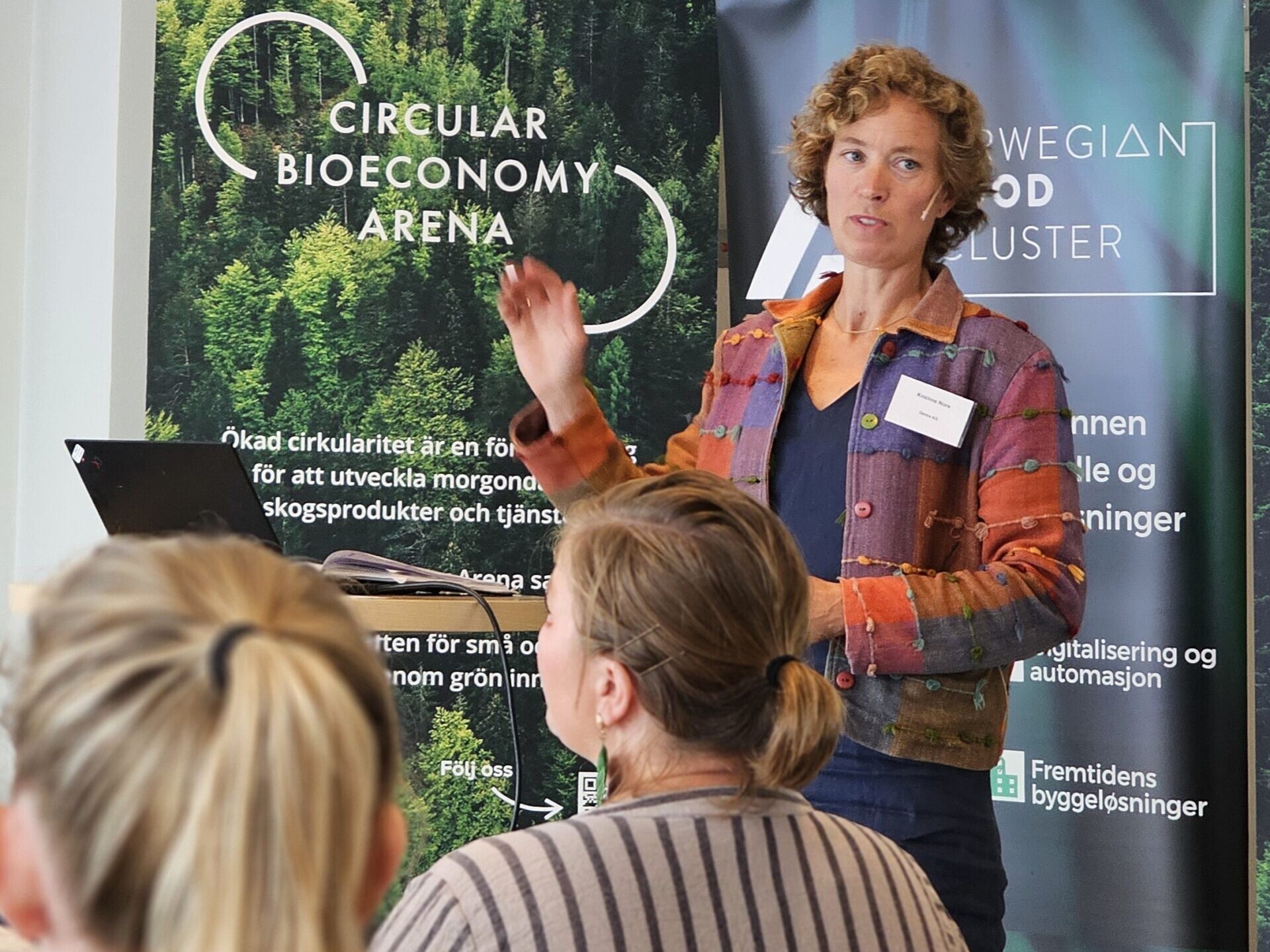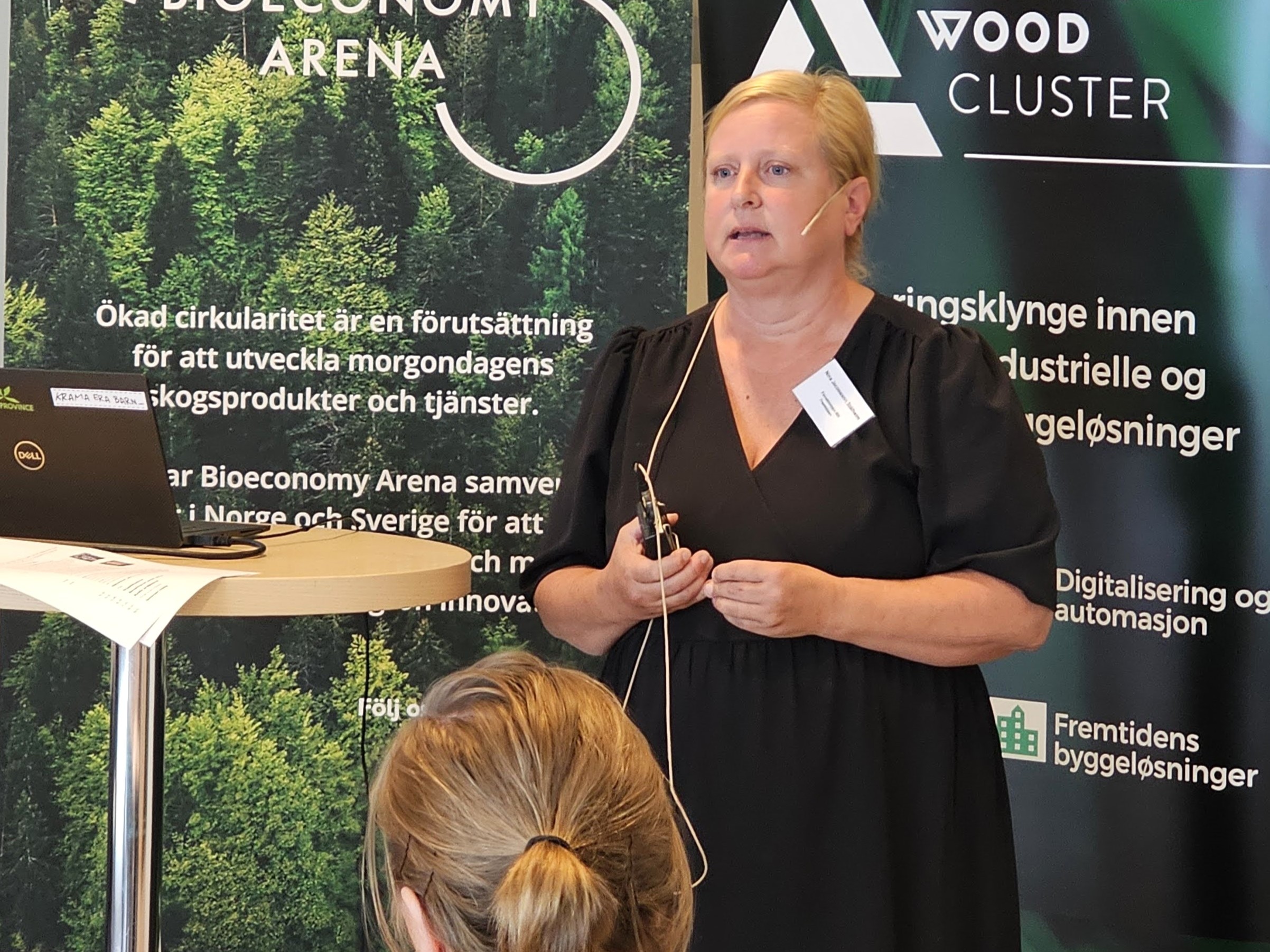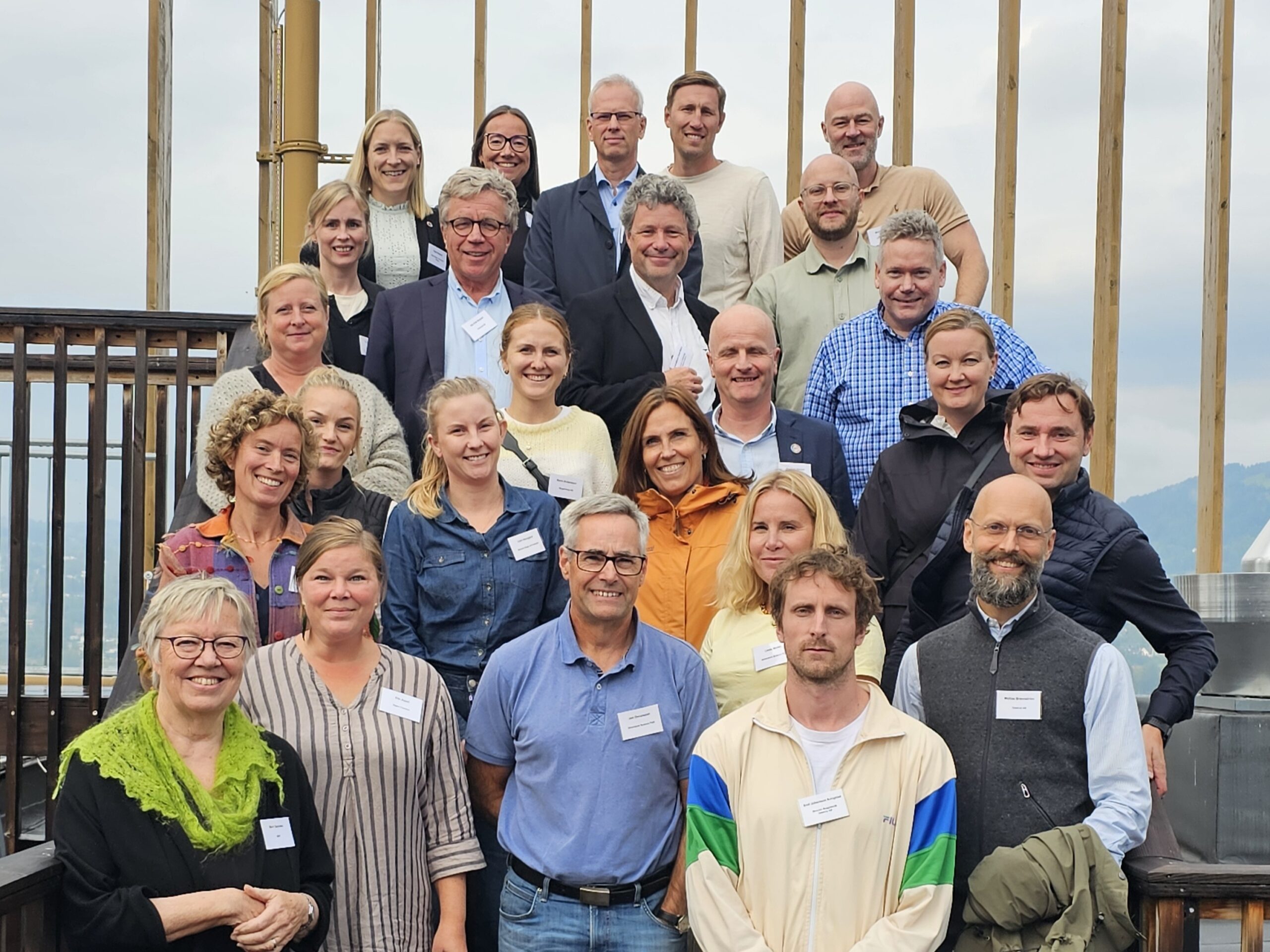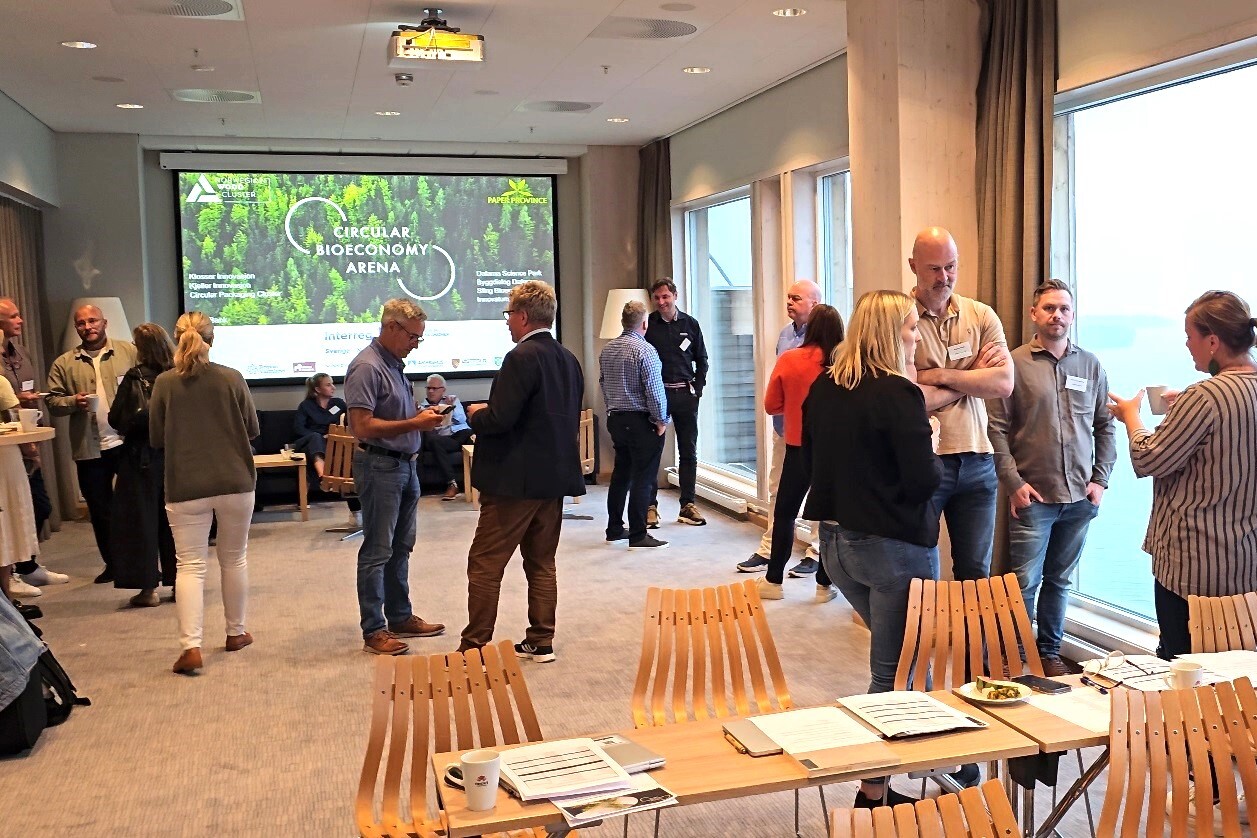The aim of the workshop was twofold; to exchange experiences of reuse in practice to learn about what works well, and at the same time identify obstacles to scaling up.
Reuse from different perspectives
The speakers at the workshop represented both countries and different parts of the value chain.
Kristine Nore, project manager for the circular project “SirkTre”, painted a picture of the market situation for the reuse of wood. Nina Jacobsson Stålheim from the City of Gothenburg showed us how the city is actively working to achieve its ambitious goal of becoming an “ecologically sustainable city” by 2030. Morten Dybesland from Statsbygg opened with a proposal for discussion: “What can Statsbygg achieve together with the wood industry?”.
From the building materials chain Beijer, Peter Bergengren presented a number of measures that have been taken to reduce waste on construction sites and facilitate the reuse of materials in new buildings. The Norwegian building materials trade was represented by Optimera and Saint-Gobain Distribution, where Ingrid Kalstad and Kathrine Backe highlighted logistics as an essential key to success.
Useful discussions
Plenty of time was set aside for discussions during the workshop to gather as much experience as possible from the participants. What are the opportunities and obstacles when it comes to using wood recovered from previous construction projects? What support needs do companies already working with reuse see? How can you take smaller experiments with reuse and scale them up?
The workshop was organized by the Interreg project Circular Bioeconomy Arena, owned by Paper Province and Norwegian Wood Cluster, in collaboration with Omtre AS, which leads the SirkTre project in Norway. On the Swedish side, Innovatum Science Park and Dalarna Science Park are partners in the Interreg project. On the Norwegian side, Kjeller Innovation, Klosser Innovation and Circular Packaging Cluster are important suppliers to the project.
